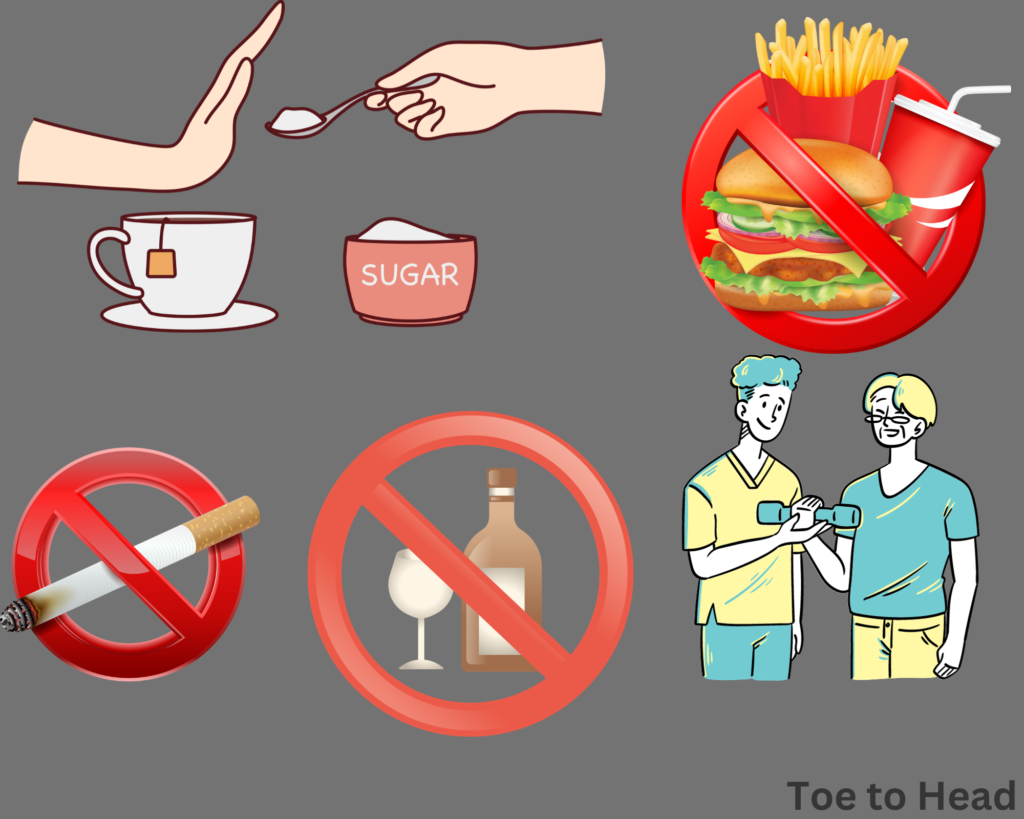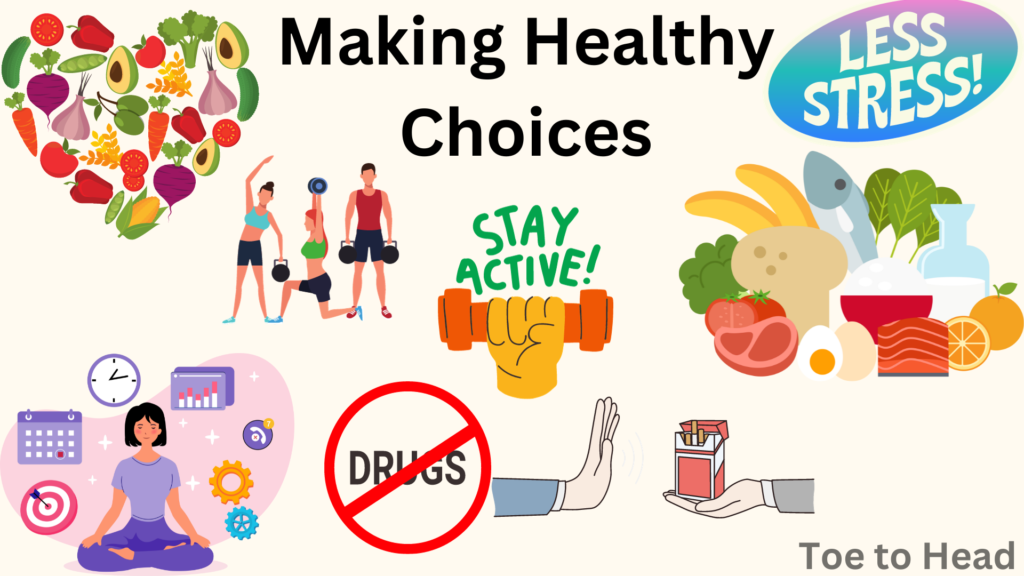Introduction:
The decisions we make on a daily basis in this fast-paced society can have a big effect on our health. Non-communicable diseases (NCDs), which are frequently associated with lifestyle choices, are a developing worldwide health problem. This blog article examines the link between lifestyle decisions and non-communicable diseases (NCDs) and offers advice on how to make better decisions that will lead to a longer, healthier life.
Understanding Non-Communicable Diseases (NCDs)
The term “non-communicable diseases” refers to a wide variety of problems that might affect one’s health, such as cardiovascular diseases, diabetes, cancer, and respiratory ailments. In contrast to infectious diseases, noncommunicable diseases (NCDs) are not caused by pathogens but rather by risk factors such as an unhealthy diet, an insufficient amount of physical activity, the use of tobacco products, and excessive use of alcohol. These conditions are responsible for a sizeable proportion of the global death toll and morbidity rates.
The Impact of Lifestyle Choices on Health

Dietary Habits:
Poor dietary habits are a leading cause of several noncommunicable diseases. Obesity, diabetes, and cardiovascular problems are all linked to diets high in processed foods, saturated fats, and sweets. Incorporating a healthy diet full of fresh produce and whole grains is essential for disease avoidance.
Physical Activity:
Multiple noncommunicable diseases have been linked to inactivity. Keeping up with a regular exercise routine not only aids in weight maintenance but also lowers the risk of cardiovascular disease and boosts general health and happiness. Taking the stairs instead of the elevator or going for a quick walk can have a big impact.
Tobacco and Alcohol Consumption:
Cigarette smoking and heavy alcohol use are well-documented contributors to the development of NCDs. Reduce your risk of getting these health problems by considerably cutting down on smoking and drinking alcohol.
Making Healthy Lifestyle Choices

Nutrient-Rich Diet:
The consumption of foods that are high in nutrients and low in calories, such as leafy greens, lean proteins, and whole grains, will supply the body with the necessary vitamins and minerals. Think about getting individualized recommendations for your diet from a nutritionist.
Regular Physical Activity:
Find ways to be active that you enjoy doing, whether it be through a sport, fitness courses, or activities that take place outside. To improve your cardiovascular health and general fitness, you should strive to complete at least 150 minutes of exercise every week at a moderate level.
Stress Management:
The presence of NCDs has been linked to prolonged stress. To improve both your mental and physical health, make stress-relieving activities a regular part of your routine. Some examples of these activities include yoga, mindfulness, and meditation.
Avoiding Harmful Substances:
Quitting smoking and drinking alcohol in moderation are two of the most important things you can do to lower your chance of developing diseases like lung cancer, liver ailments, and heart problems.

What are the lifestyle diseases?
Lifestyle diseases, which are also called non-communicable diseases (NCDs), are illnesses that are mostly caused by the things a person does, drinks, and decides every day. These diseases are often caused by things like bad diet, not being active enough, smoking, and drinking too much alcohol. Heart diseases, diabetes, obesity, some types of cancer, and lung diseases are all common cases.
What are the 10 common noncommunicable diseases?
- Cardiovascular Diseases (CVDs): Such as heart attacks and strokes.
- Cancer: Uncontrolled cell growth leading to tumor formation.
- Chronic Respiratory Diseases: Such as chronic obstructive pulmonary disease (COPD) and asthma.
- Diabetes: A metabolic disorder affecting blood sugar levels.
- Obesity: Excessive body weight leading to various health issues.
- Alzheimer’s Disease: A progressive neurodegenerative disorder affecting cognition.
- Osteoporosis: Weakening of bones, increasing the risk of fractures.
- Chronic Kidney Disease (CKD): Progressive loss of kidney function.
- Liver Diseases: Including cirrhosis and fatty liver disease.
- Arthritis: Inflammation of joints causing pain and stiffness.
What are the non-communicable diseases?
Diseases that aren’t spread by germs are called non-communicable diseases (NCDs). These are conditions that are usually caused by long-term living choices. Heart diseases, cancer, long-term lung diseases, diabetes, and other conditions that affect organs like the kidneys and liver are some of these diseases. They are a big problem for world health and often need ongoing care and changes to people’s lifestyles to stay away.
What is the best definition of a lifestyle disease?
Non-communicable diseases (NCDs) are those that affect an individual’s health but cannot be spread from person to person due to genetics or environmental factors. Diet, inactivity, tobacco and alcohol use, and stress have all been associated to these illnesses. Heart disease, diabetes, and some forms of cancer are all considered “lifestyle diseases,” which highlights the profound influence of individual decisions on long-term health consequences.
Conclusion:
In conclusion, there is no doubt that living choices are linked to noncommunicable diseases. By changing our habits to be healthy, we can greatly lower our chances of getting these diseases and make our lives better in general. People can take charge of their health and build a foundation for a disease-free future by making smart decisions about their diet, exercise, and general well-being.
Don’t forget that it’s never too late to change things for the better. Today is the first day of your journey to a better, more fulfilling life.



